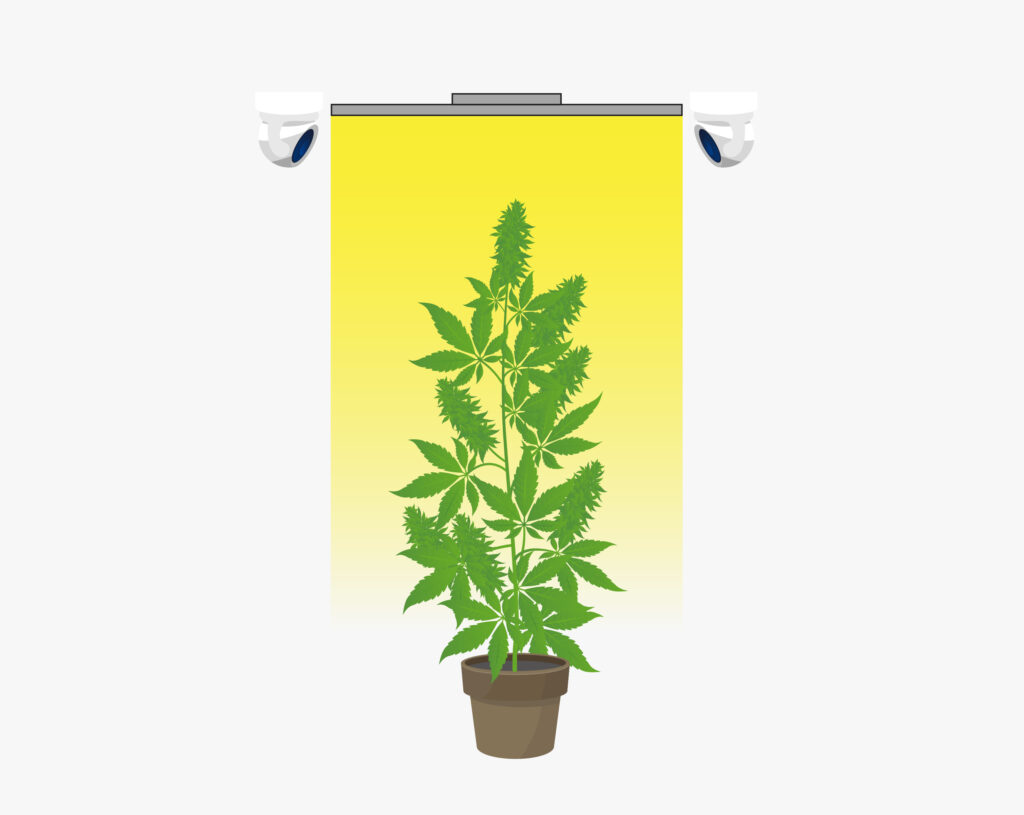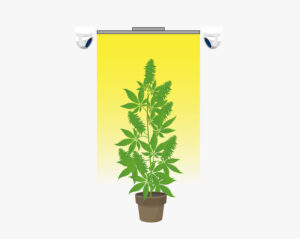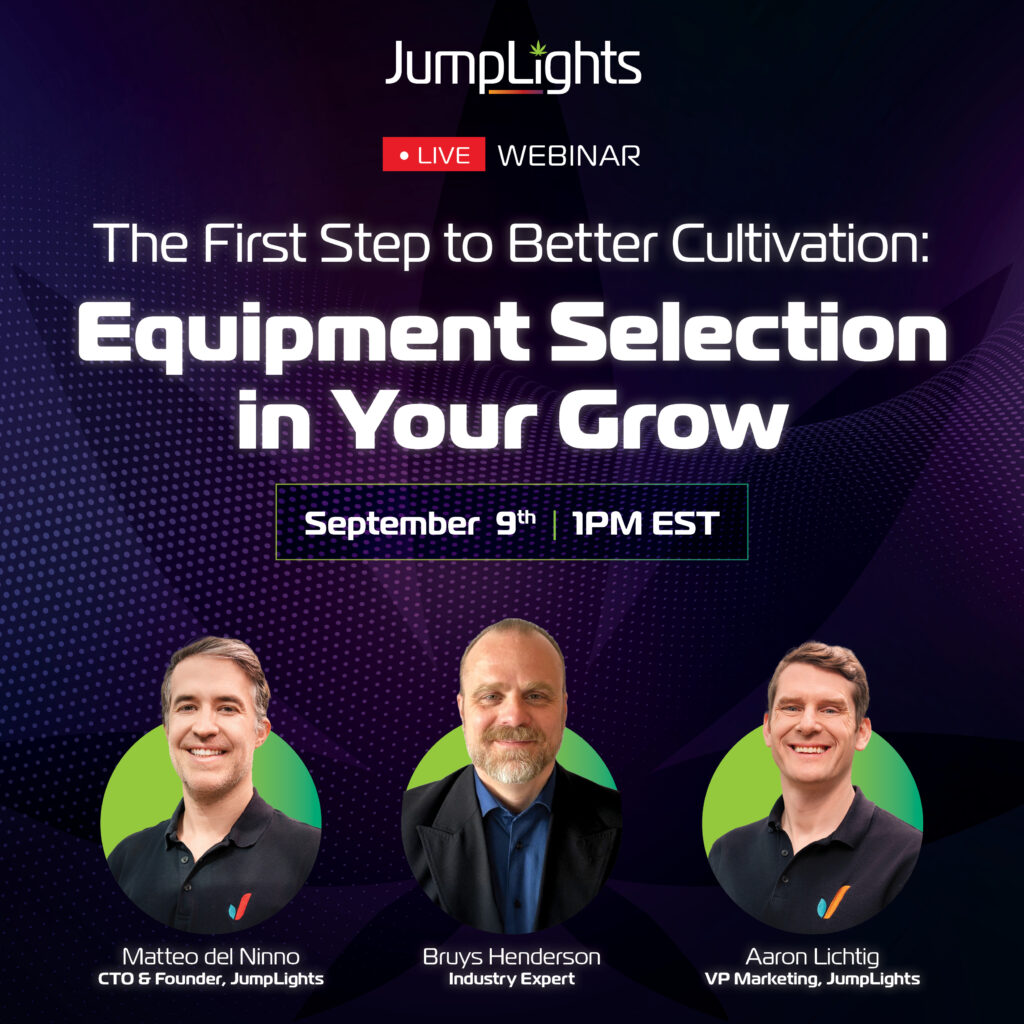
May 23, 2025
If you grow cannabis, poinsettias, or any other photoperiod-sensitive plants, you know light is a major factor – if not the crucial factor – in a plant’s development.
For plants, photoperiod is the period of light within a 24-hour day and dictates everything from flowering to fruiting. It’s important. And when it’s disrupted, it can have negative effects. Many of our customers here at JumpLights have asked us if near-infrared radiation (NIR) coming from the ubiquitous security cameras in their grows can somehow throw off a plant’s photoperiod and cause negative effects.
It’s an interesting question and here at JumpLights, we love interesting questions! This article will explore whether your security camera NIR could impact your plants.
The Rise of NIR Security Cameras
Security cameras with near-infrared (NIR) technology are everywhere. They’re especially common in the cannabis industry, which needs to track the product very closely. Security cameras put out light in the near-infrared or infrared spectrum, which is invisible to the human eye but detectable by some animals and certain camera sensors. They do this so they can “see” what’s happening in the dark and record it. The wavelength emitted by these cameras is 850 to 950 nanometers.

What Do We Know Today?
Some studies have started to explore the potential effects of NIR light on plant growth and photoperiod. Let’s break down what science knows today.
- Plants Can Detect NIR Light
Plants are sensitive to different wavelengths of light, including those in the infrared range and the photoreceptors in plants are tuned to respond to certain types of light, especially in the red and far-red spectral regions. Since NIR light emitted by security cameras is in these wavelengths, plants could potentially detect it.
- There is a Potential Impact on Flowering and Growth
If plants experience light during their dark period, even if that light is infrared, it could confuse them into thinking the day is longer than it actually is. For example, a cannabis plant exposed to artificial light, such as from a nearby security camera, could in theory get tricked into staying in the vegetative phase longer than you want. This could delay flowering, affecting the overall yield and quality of a cannabis harvest.
While the NIR light emitted by security cameras is typically quite dim, the cumulative effect of multiple cameras or prolonged exposure in an indoor grow space could disrupt this natural rhythm. However, research so far suggests that the light from a single camera may not be strong enough to cause dramatic effects, especially if there is a clear, long period of darkness during the night.
- The Importance of Distance and Camera Positioning
Research from Dr. Bruce Bugbee’s lab at Utah State has shown that NIR can impact plant flowering. They found that flowering was delayed by about 10 days at a NIR PFD of 120 umol/m2/s. This intensity was achieved with the NIR just 1.6 ft away from plants. In a commercial grow, the NIR is unlikely to be this close to the plant.
Overall, though, NIR is unlikely to have an effect on plants’ photoperiod as long as the plants are positioned more than 3 feet away from the NIR emitted by security cameras. This is the case in the vast majority of commercial grows.
The best practice is to put the cameras far away from plants and, where possible, aim them away from the plants.

- More Research is Needed
To date, most studies have been more general, researching the effects of artificial lighting overall, and not specifically about the impact of NIR light from security cameras. There’s definitely more we could learn in the coming years.
What Should You Do?
So, is now the time to worry? For most growers, probably not.
But if you have a NIR security camera within 3 feet of plants, or if you have a large volume of cameras in a small area emitting powerful NIR light it’s worth making some changes. If this is your situation, you should think about moving cameras further from plants, and positioning them to shine light as far away from plants as is feasible. You should also continue to monitor your light cycles closely.





